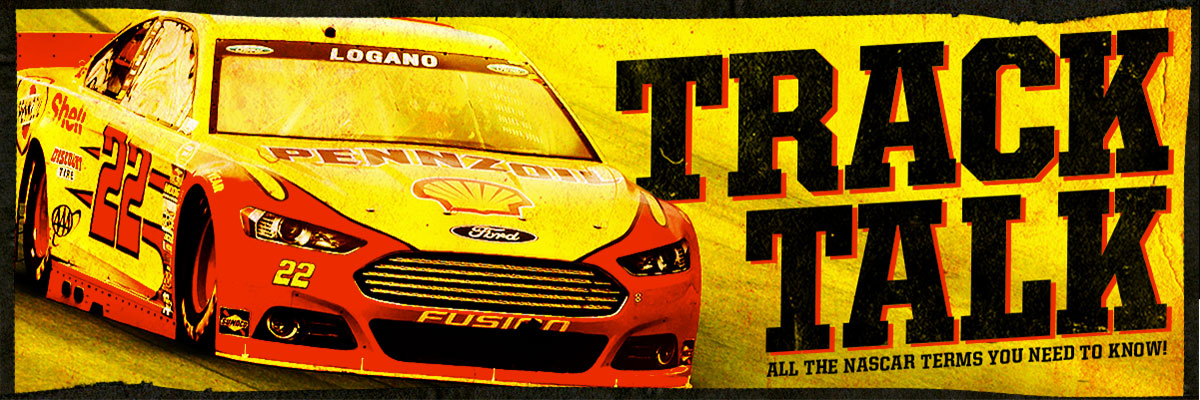
CAMBER: The amount a tire is tilted in or out from vertical. Described in degrees, either positive or negative.
DIRTY AIR: Aerodynamic term for the turbulent air currents caused by fast-moving cars that can cause a particular car to lose control.
DOWNFORCE: A combination of aerodynamic and centrifugal forces. The more downforce, the more grip a car has. But more downforce also means more drag, which can rob a race car of speed.
DRAFTING: The practice of two or more cars, while racing, to run nose-to-tail, almost touching. The lead car, by displacing the air in front of it, creates a vacuum between its rear end and the nose of the following car, actually pulling the second car along with it.
DRAG: The resistance a car experiences when passing through air at high speeds. A resisting force exerted on a car parallel to its air stream and opposite in direction to its motion.
DRIVING INTO THE CORNER: When drivers say they are having problems driving into the corner it means the car is not performing how they want it to (too tight or too loose) at the point where the car is entering the corner. How a driver approaches a corner could depend on strategy: trying to pass, gain speed, save tires or drive the shortest distance through the corner.
GROOVE: Slang term for the best route around the racetrack; the most efficient or quickest way around the track for a particular driver. The “high groove” takes a car closer to the outside wall for most of a lap, while the “low groove” takes a car closer to the apron than the outside wall. Road racers use the term “line.” Drivers search for a fast groove, and that has been known to change depending on track and weather conditions.
LOOSE: Also known as “oversteer.” When the rear tires of the car have trouble sticking in the corners. This causes the car to “fishtail” as the rear end swings outward during turns. A minor amount of this effect can be desirable on certain tracks.
QUARTER-PANEL: The sheet metal on both sides of the car from the C-post to the rear bumper below the deck lid and above the wheel well.
RESTRICTOR PLATE: A thin metal plate with four holes that restricts airflow from the carburetor into the engine. Used to reduce horsepower and keep speeds down. The restrictor plates are currently used at Daytona International Speedway and Talladega Superspeedway.
ROUND (of wedge): Slang term for a way of making chassis adjustments utilizing the race car’s springs. A wrench is inserted in a jack bolt attached to the springs, and is used to tighten or loosen the amount of play in the spring. This in turn can loosen or tighten up the handling of a race car.
SHORT PIT: The strategy of pitting well before running out of fuel, getting fresh tires to make up time on the leaders and theoretically taking the lead once those lead cars need to pit. Short pitting puts a car on an alternate pit cycle and could be beneficial or not depending in part upon how cautions fall the rest of the race.
SIDE DRAFTING: When a car races alongside another car and “dumps” air flow from that car’s nose to the spoiler of the other car, causing the other car to lose momentum and allowing the side-drafting car to pull away. It’s a strategy used on larger tracks such as Talladega, Daytona and Michigan.
SLINGSHOT: A maneuver in which a car following the leader in a draft suddenly steers around it, breaking the vacuum; this provides an extra burst of speed that allows the second car to take the lead.
SPLITTER: Runs the entire width of the car at the front and sometimes appears as if it’s touching the ground. What the spoiler does for downforce in the back of the car, the splitter provides downforce to the front. Damage to the splitter can be difficult to overcome because of the important role it plays in the aerodynamics of the car.
SPOILER: A metal blade attached to the rear deck lid of the car. It helps restrict airflow over the rear of the car, providing downforce and traction.
TAPERED SPACER: A metal piece that limits how much air gets into the engine cylinder, which in turn limits how much fuel can go into the cylinder and reduces the amount of energy produced.
TIGHT: Also known as “understeer.” A car is said to be tight if the front wheels lose traction before the rear wheels do. A tight race car doesn’t seem able to steer sharply enough through the turns. Instead, the front end continues toward the wall.
TRACK BAR: A lateral bar that keeps the rear tires centered within the body of the car. It connects the frame on one side and the rear axle on the other. Also called the panhard bar.
WAVE AROUND: Cars can take the wave around when there is one to go under caution and the pace car turns its lights off. Wave-around cars are not permitted to pit until after the green flag comes back out and the race resumes. Wave-around cars restart at the rear of the field, but they are put in front of cars that have received a penalty.
By Staff Report | http://www.nascar.com/en_us/news-media/articles/2015/8/13/top-20-nascar-terms.html











